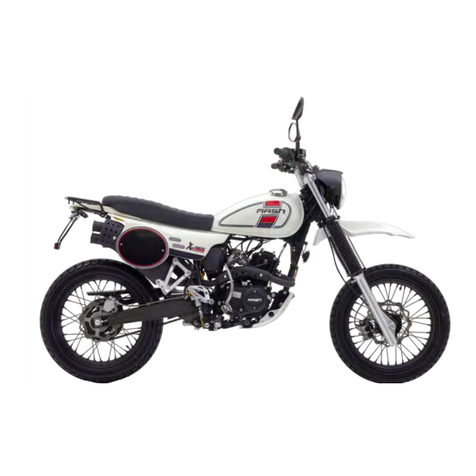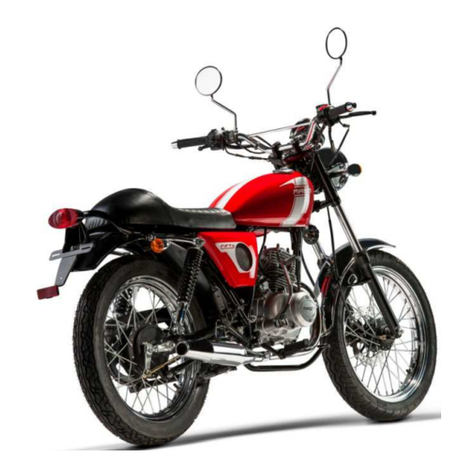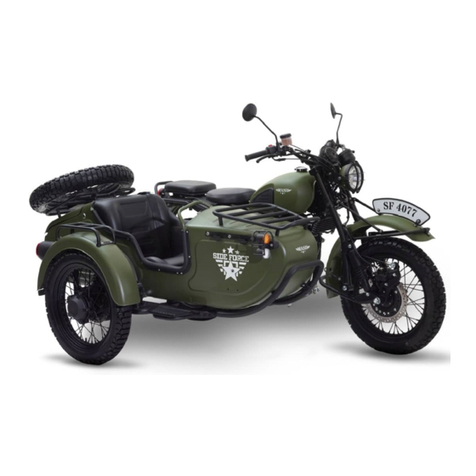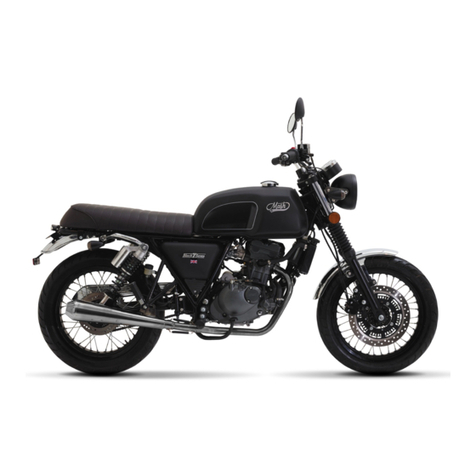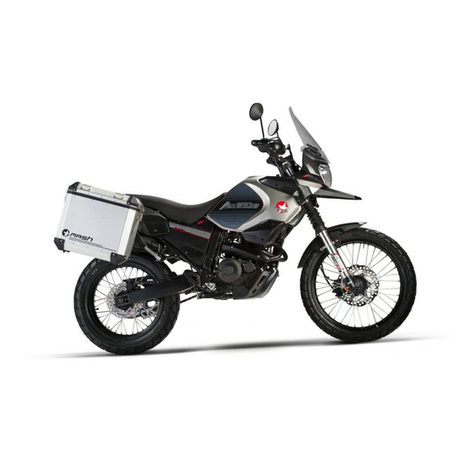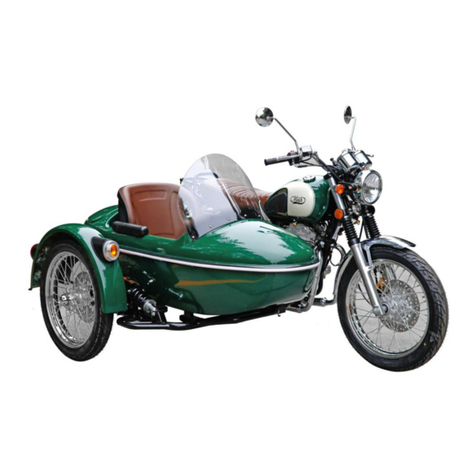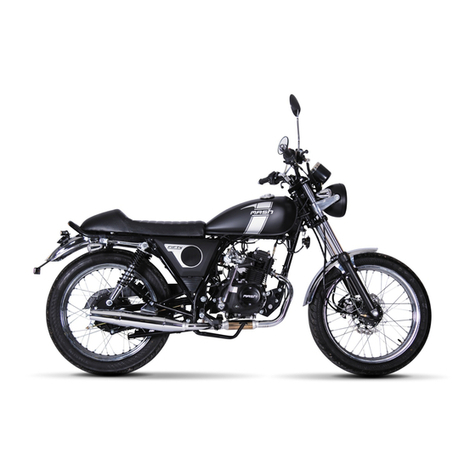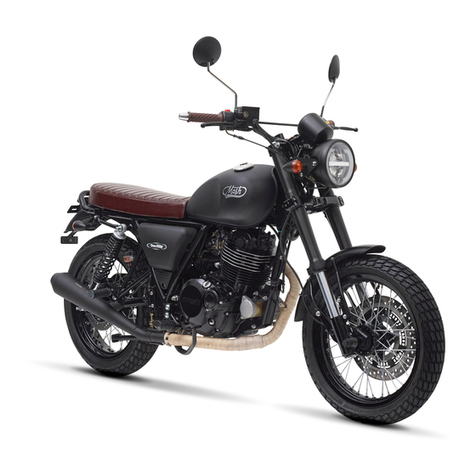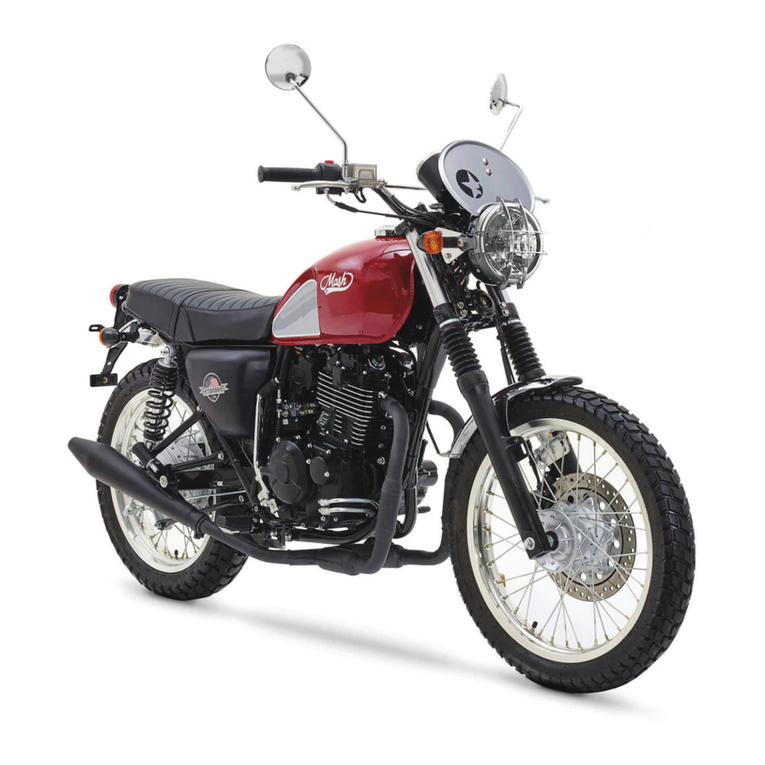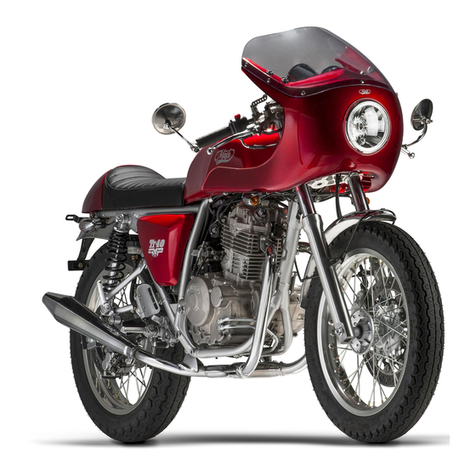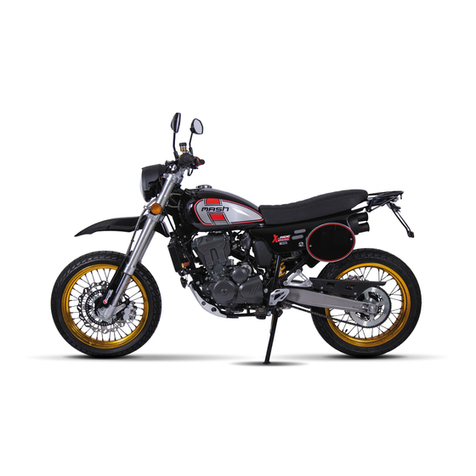5
Do not ride while under the influence
Before getting on your bike, make sure:
•
You have not consumed alcohol or taken drugs.
•
You are in good physical and mental condition.
•
You have done the recommended pre-ride inspection.
•
Start the engine in a well-ventilated area.
•
The exhaust emits toxic and poisonous carbon monoxide.
Caution
Operating this motorcycle after consuming alcohol or drugs could
seriously affect your judgment, could cause you to react more slowly,
could affect your balance and perception and could result in an
accident.
Safe riding principles
•
Keep enough distance with the other vehicles around you
as this gives you time to react.
•
Always observe the rules of the road. Observe the posted
speed limit, and signal your turns well in advance.
•
Know your limits. Do not travel faster than you are able to
safely control the vehicle. Always travel at a speed that is proper
for the operating conditions, your ability and experience.
•
Always inspect your motorcycle each time you use it to
make sure it is in safe operating condition.
•
Always follow the inspection and scheduled maintenance
procedures described in this manual.
•
Test your brakes after operating in wet conditions.
•
Never attempt wheelies, jumps and other stunts, as these
could cause damage to the motorcycle and cause loss of control.
•
Always keep both hands on the handlebar and feet on the
foot pegs during operation.
•
Never consume alcohol or drugs before or while riding your
motorcycle.
•
Be aware that long travel distances can cause fatigue that
can affect performance and awareness.
•
Do not touch the engine or exhaust after riding as they will
be extremely hot right after the engine has been turned off.
•
Park the motorcycle away from fuel or flammable
materials.
